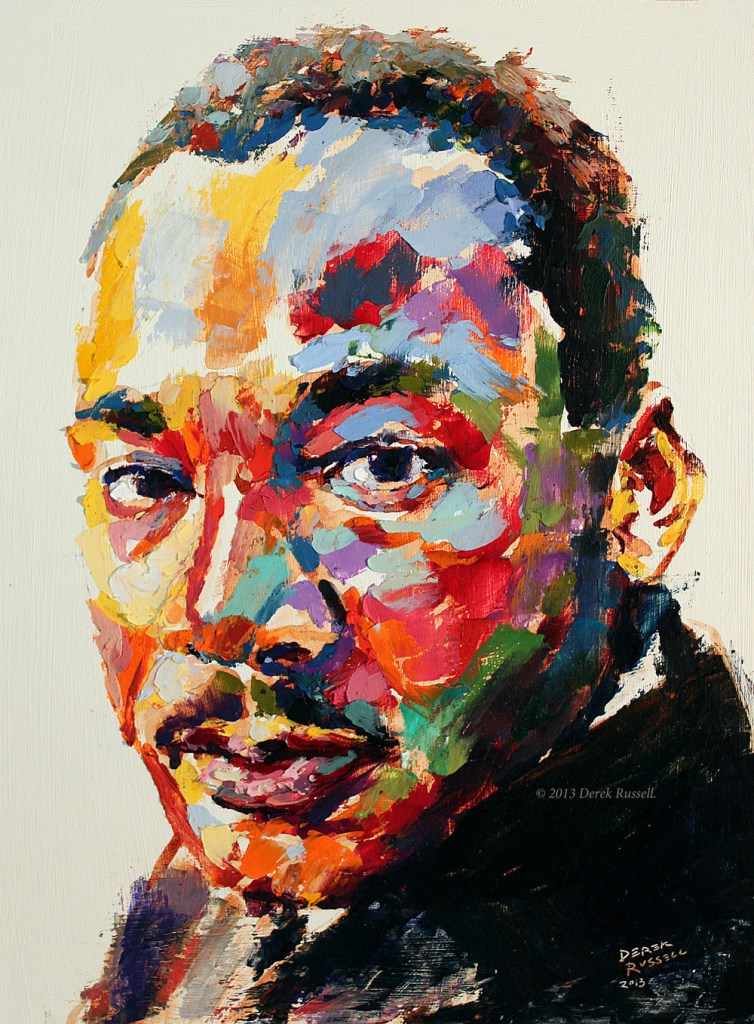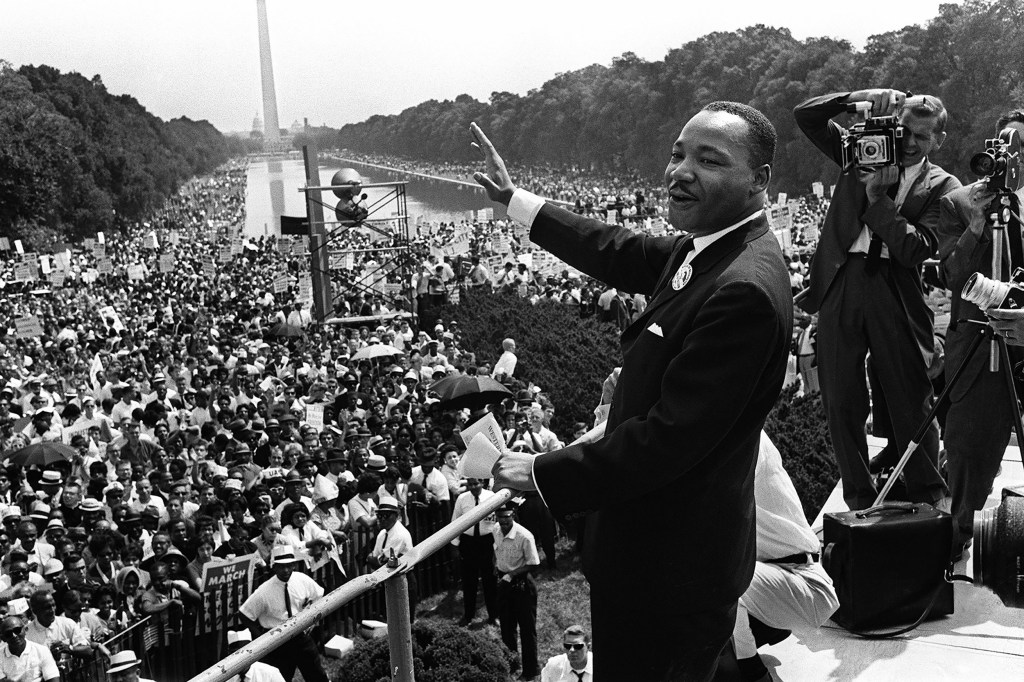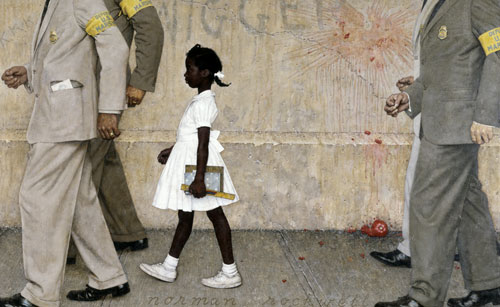Martin Luther King, Jr. and The Problem We All Live With
Today is a national holiday (3rd Monday in January) honoring the birthday of Martin Luther King Jr. As our country continues to be embroiled in unrest and riots with focus on racism the likes of which we have not seen since the days of Martin Luther King, Jr., it seems appropriate to focus on some of the art that honors his life and legacy with this week’s post.
Dr. King successfully protested racial discrimination in state and federal law. He was the major spokesperson for the nonviolent activism in the Civil Rights Movement in the mid-twentieth century. In his honor, President Ronald Reagan signed the holiday into law in 1983. In 2000, it was officially recognized in all 50 states.
In my research to find art that portrays or honors Dr. King, several works of art stood out to me, including photographs from the scene of his iconic “I Have A Dream” speech. Interestingly, the artists of these paintings are not ones who I would consider “famous.” I had expected to unearth portraits of prominent people by contemporary artists such as Andy Warhol or Chuck Close; I did not. A famous painting by Norman Rockwell, (1964) is not a portrait of King but honors his legacy–and its title summarizes it all: “The Problem We All Live With”
Who is Martin Luther King?
Click on titles below for details on each artwork.
“Martin Luther King Jr.” Watercolor by Boris Chaliapin (1957)
This painting incorporates a history-altering event that ultimately also shaped the life and legacy of Dr. King. Under his leadership, non-violent protest became a defining feature of the modern civil rights movement in America. The December 1, 1955 arrest of black female Rosa Parks for her refusal to surrender her seat on a public bus to a white male passenger led to her conviction of violating local segregation laws; this sparked massive boycotts and protests. The newly formed Montgomery Improvement Association selected King, just 26 years old, as its president and spokesman, thrusting him onto the national civil rights scene. King’s inspirational addresses led to the United States Supreme Court ruling bus segregation unconstitutional.

Advocating non-violent action, one such declaration by Dr. King is timeless: “We must meet the forces of hate with the power of love; we must meet physical force with soul force.” (https://npg.si.edu/learn/classroom-resource/martin-luther-king-jr).
In February 1957, Time featured Chaliapin’s portrait of King on its cover; TIME published an in-depth profile of King. Chaliapin, a frequent Time cover artist, portrays King in a suit and tie with an integrated crowd of riders boarding a Montgomery city bus and the black-and-white sketch of a figure in ministerial robes delivering an address from the pulpit.
Crediting the inspiration for his actions, King is quoted in the article as saying: “The spirit of passive resistance came to me from the Bible and the teachings of Jesus. The techniques of execution came from Gandhi.”
“Martin Luther King Jr.” by Derek Russell (2013)
This rendition of “Martin Luther King Jr.” was painted in 2013 by Derek Russell, a modern master and creator of the painting style known as Free Impressionism. Thick impasto strokes and bold and vibrant colors in his oil paintings have brought a new energy to the contemporary art world. I look forward to exploring and viewing more of his work.
This painting is intriguing not only because of the intensity of the color, and strokes but also how it portrays the intensity in Dr. King’s face.
Photo and info from derekrussellartist.com/martin-luther-king-jr.

The Legacy of Martin Luther King
Dr. King’s legacy is primarily associated with his “I have a dream…” speech on the Washington Mall on August 28, 1963 which has produced many famous iconic photographs.
This photo by NBC (Google Images) portrays the setting and magnitude of the crowd he addressed that day.

The famous lines of the famous speech…
“I have a dream that one day this nation will rise up and live out the true meaning of its creed: ‘We hold these truths to be self-evident: that all men are created equal.'” ~Martin Luther King Jr. (28 August 1963).
This photo by CNN (Google Images) portrays the intensity of Dr. King.

The Legacy of Ruby Bridges
Norman Rockwell, American artist, was a strong supporter of the goals of tolerance and equality. He was inspired by the historic walk of Ruby Bridges in 1961, six years after the 1954 United States Supreme Court declared that state laws establishing separate public schools for black and white students were unconstitutional. Rockwell confronted the issue of prejudice head-on in the January 14, 1964, issue of Look magazine with one of his most powerful paintings, “The Problem We All Live With.” (nrm.org/)
“The Problem We All Live With” (1964) features the bold illustration of Ruby Bridges, a young African-American girl, being escorted to school amidst signs of protest and fear.
The painting remains an important national symbol of the struggle for racial equality; it also ushered in a new era for Rockwell’s career.
Photo and info from nrm.org.

I hope and pray that everyone will again listen to “I have a dream”. We must dream and then act on, what we as a nation must accomplish – listening to each other with dignity and respect. We must focus on what we have in common – not on what divides us.
LikeLiked by 2 people
Thanks!
LikeLiked by 1 person